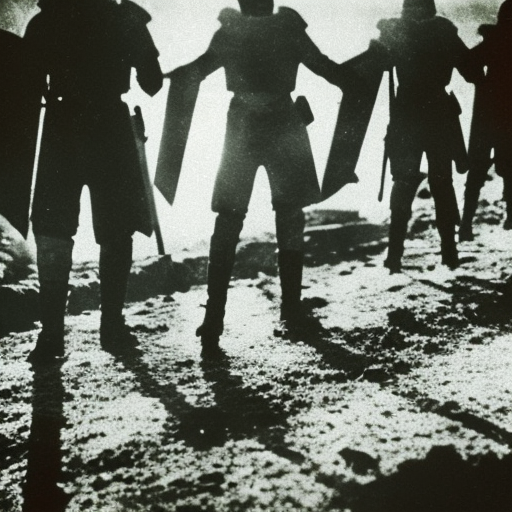Summary: The Stedinger Crusade
The Stedinger Crusade was a conflict that took place in the 13th century in the region of Stedingen, located in what is now modern-day Germany. It was a religious and political uprising led by the peasants against the ruling class, particularly the Archbishop of Bremen and the Count of Oldenburg. The peasants, known as the Stedingers, were primarily farmers and fishermen who were discontented with the oppressive feudal system and the increasing power of the Church.
Background
The Stedinger Crusade was a culmination of long-standing grievances held by the Stedingers. They resented the heavy taxes imposed by the Church and the nobility, as well as the arbitrary exercise of power by the Archbishop and the Count. The Stedingers also felt that their traditional rights and freedoms were being eroded by the encroachment of feudalism.
The Uprising
In 1232, the Stedingers decided to take a stand against the oppressive regime. They formed a confederation and elected leaders to represent their interests. The Stedingers’ demands included the abolition of serfdom, the reduction of taxes, and the restoration of their traditional rights and privileges. They also sought to limit the power of the Church and the nobility.
The Archbishop of Bremen and the Count of Oldenburg, alarmed by the growing power of the Stedingers, declared them heretics and called for a crusade against them. They enlisted the support of neighboring lords and knights, as well as the backing of the Church, to suppress the uprising.
The Crusade
In 1233, the Crusade against the Stedingers was launched. The combined forces of the Archbishop, the Count, and their allies marched into Stedingen, determined to crush the rebellion. The Stedingers, though outnumbered and lacking in military training, put up a fierce resistance. They utilized guerrilla tactics, ambushing the Crusaders and launching surprise attacks.
The conflict lasted for several years, with neither side gaining a decisive advantage. The Stedingers’ knowledge of the local terrain and their determination to defend their homeland gave them an advantage against the Crusaders. However, the Crusaders’ superior military resources and the support of the Church eventually began to take its toll on the Stedingers.
The Aftermath
In 1234, the Stedinger Crusade came to a brutal end. The Crusaders launched a final assault on the Stedinger stronghold, resulting in a massacre. The Stedingers were overwhelmed, and their leaders were captured and executed. The surviving Stedingers were forced to submit to the authority of the Archbishop and the Count, effectively ending their rebellion.
The aftermath of the Stedinger Crusade was marked by the consolidation of power by the ruling class. The Archbishop and the Count tightened their grip on the region, suppressing any further dissent. The Stedingers’ demands for freedom and justice were crushed, and they were subjected to even harsher feudal conditions.
The Stedinger Crusade, although ultimately unsuccessful, highlighted the deep-seated social and economic tensions of the time. It demonstrated the resistance of the common people against oppressive rulers and the desire for greater rights and freedoms. The legacy of the Stedinger Crusade would continue to inspire future uprisings and movements for social change.












